
How to Use SW-420 Vibration Sensor: Examples, Pinouts, and Specs
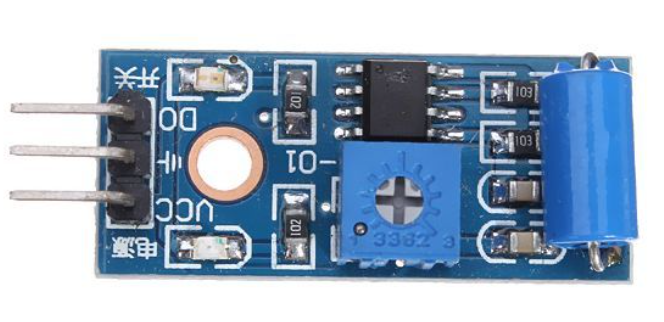
 Design with SW-420 Vibration Sensor in Cirkit Designer
Design with SW-420 Vibration Sensor in Cirkit DesignerIntroduction
The SW-420 Vibration Sensor is a device designed to detect vibrations and movements. It operates using a piezoelectric sensor that generates a voltage when subjected to mechanical stress. This makes it an ideal choice for applications requiring motion detection or vibration monitoring. The sensor is commonly used in security systems, industrial equipment monitoring, and motion-triggered devices.
Explore Projects Built with SW-420 Vibration Sensor
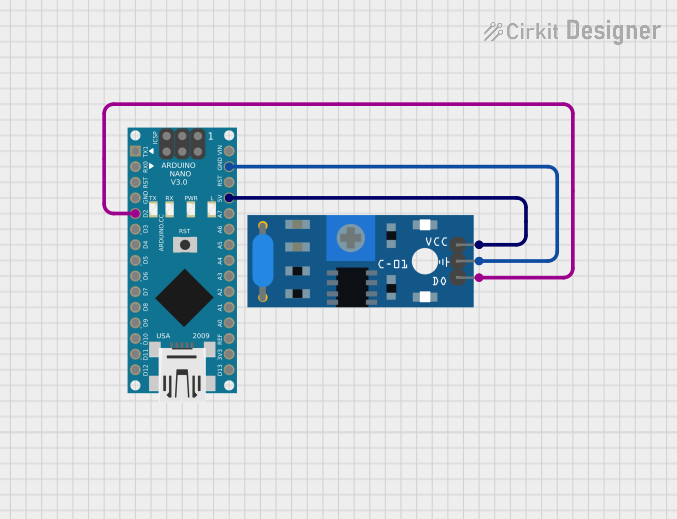
 Open Project in Cirkit Designer
Open Project in Cirkit Designer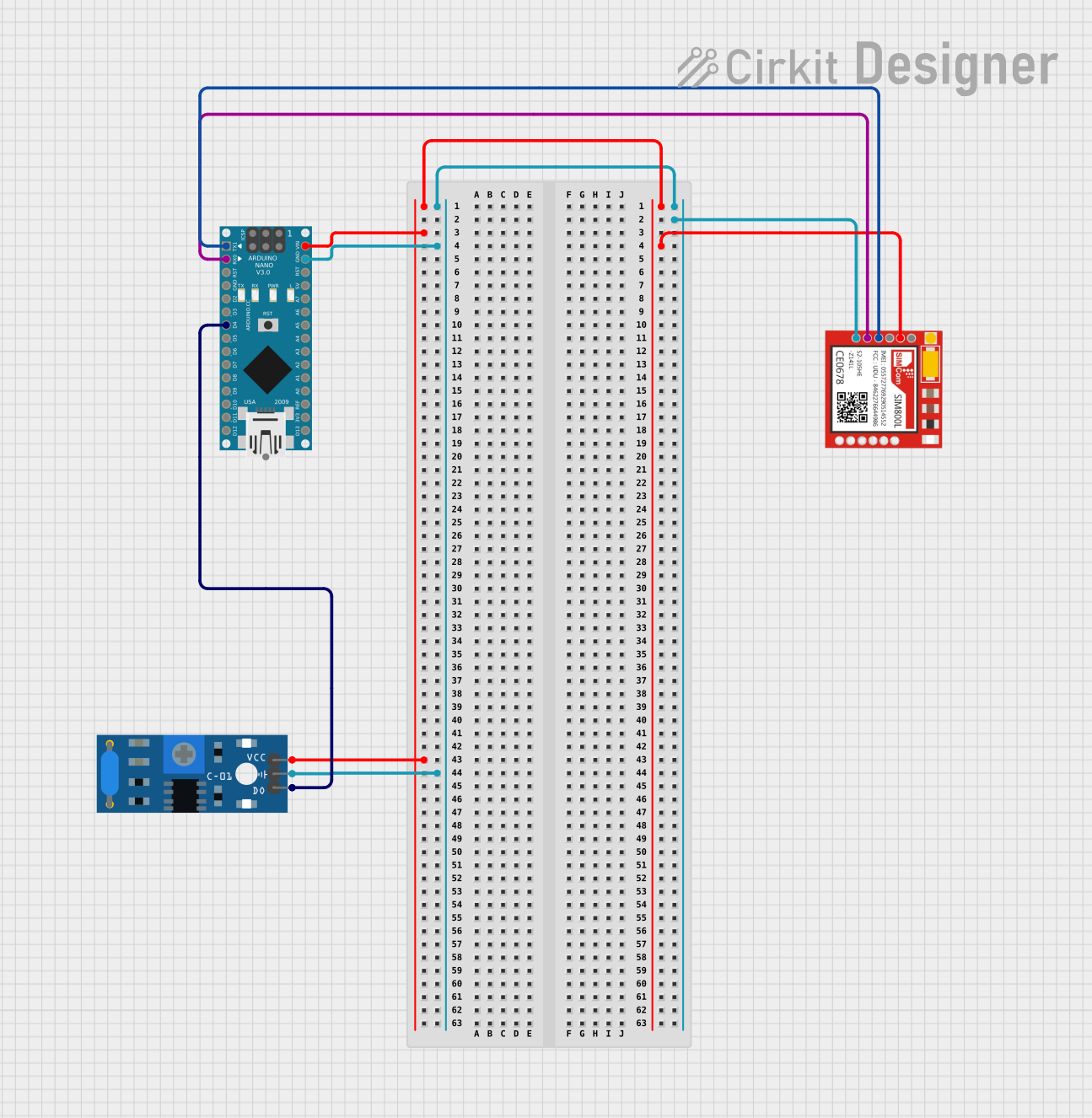
 Open Project in Cirkit Designer
Open Project in Cirkit Designer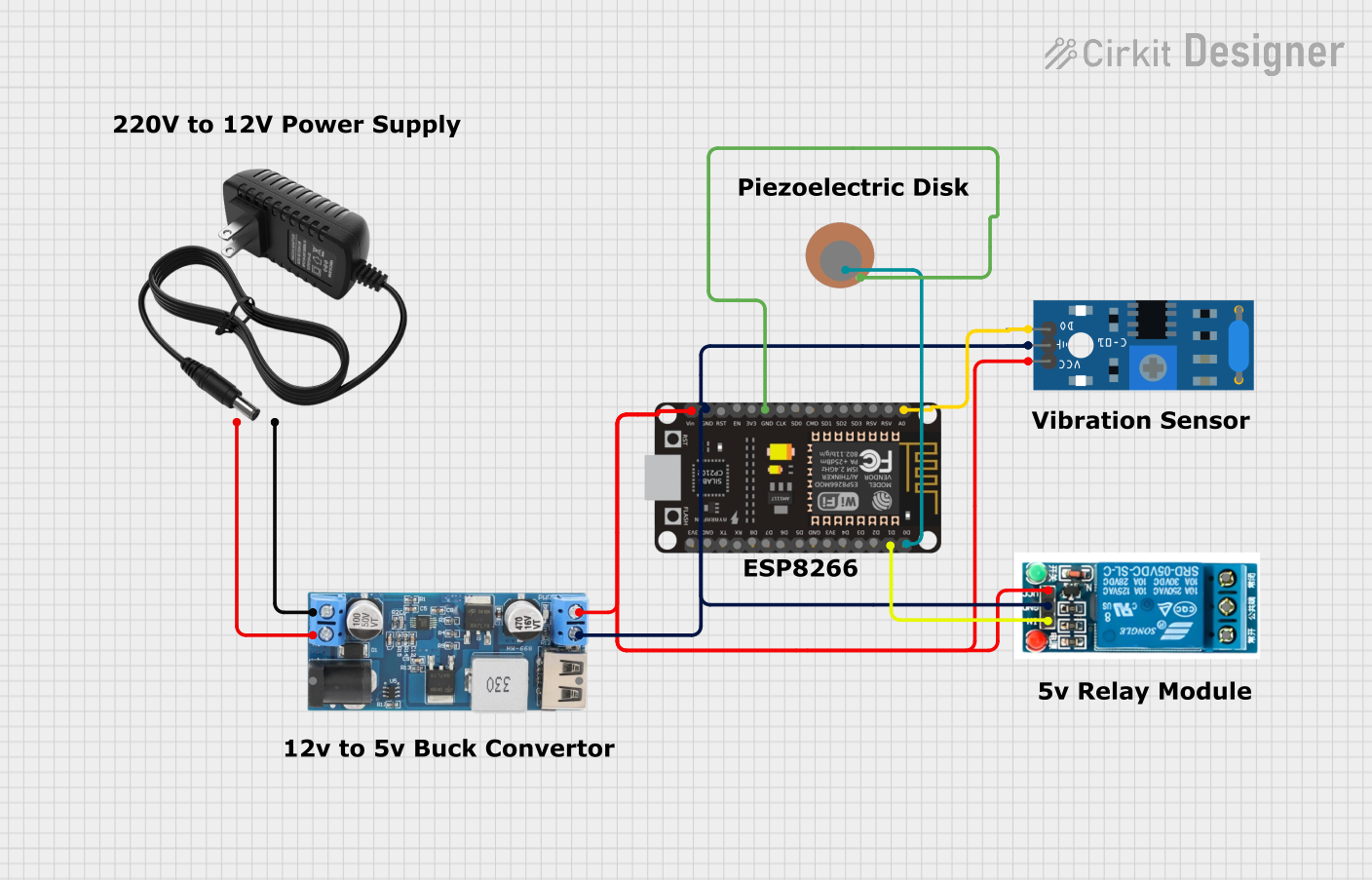
 Open Project in Cirkit Designer
Open Project in Cirkit Designer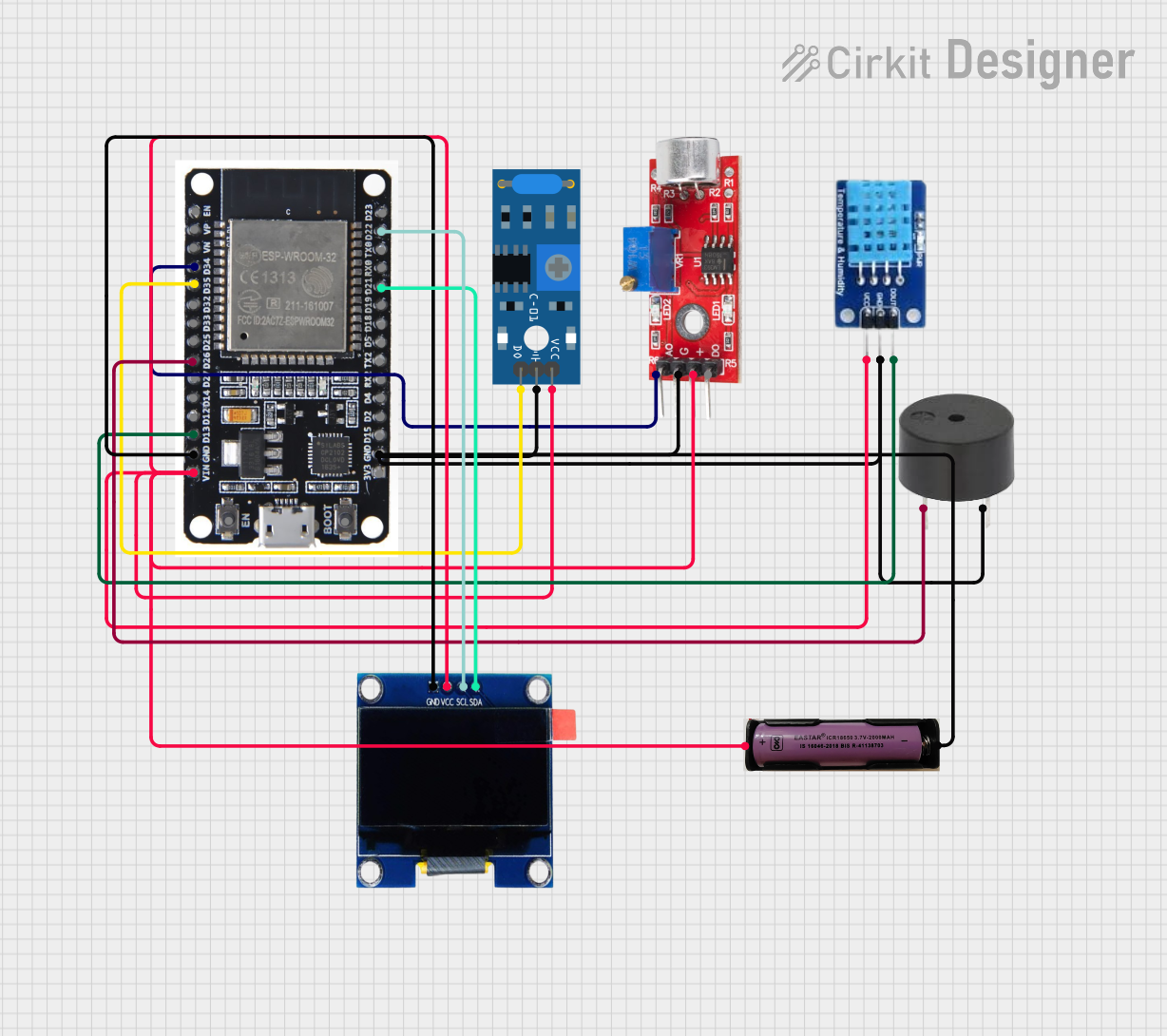
 Open Project in Cirkit Designer
Open Project in Cirkit DesignerExplore Projects Built with SW-420 Vibration Sensor

 Open Project in Cirkit Designer
Open Project in Cirkit Designer
 Open Project in Cirkit Designer
Open Project in Cirkit Designer
 Open Project in Cirkit Designer
Open Project in Cirkit Designer
 Open Project in Cirkit Designer
Open Project in Cirkit DesignerCommon Applications:
- Security systems to detect unauthorized access or tampering
- Earthquake detection and monitoring
- Industrial machinery vibration monitoring
- Motion-triggered alarms or notifications
- Smart home automation systems
Technical Specifications
Below are the key technical details and pin configuration for the SW-420 Vibration Sensor:
Key Technical Details:
- Operating Voltage: 3.3V to 5V DC
- Output Type: Digital (High/Low)
- Sensitivity: Adjustable via onboard potentiometer
- Output Signal: High (no vibration) or Low (vibration detected)
- Dimensions: 32mm x 14mm x 8mm
- Operating Temperature: -40°C to 85°C
- Power Consumption: Low power consumption, suitable for battery-powered applications
Pin Configuration:
The SW-420 Vibration Sensor typically has three pins. The table below describes each pin:
| Pin | Name | Description |
|---|---|---|
| 1 | VCC | Power supply pin. Connect to 3.3V or 5V DC. |
| 2 | GND | Ground pin. Connect to the ground of the circuit. |
| 3 | DO (Digital Output) | Outputs a digital signal: HIGH when no vibration, LOW when vibration is detected. |
Usage Instructions
How to Use the SW-420 Vibration Sensor in a Circuit:
- Power the Sensor: Connect the VCC pin to a 3.3V or 5V power source and the GND pin to the ground.
- Connect the Output: Connect the DO (Digital Output) pin to a microcontroller's digital input pin (e.g., Arduino).
- Adjust Sensitivity: Use the onboard potentiometer to adjust the sensitivity of the sensor. Turning it clockwise increases sensitivity, while turning it counterclockwise decreases sensitivity.
- Monitor Output: The sensor outputs a HIGH signal when no vibration is detected and a LOW signal when vibration is detected.
Important Considerations and Best Practices:
- Debouncing: The sensor may produce noisy signals due to rapid vibrations. Use software debouncing or a capacitor to smooth the output.
- Mounting: Secure the sensor firmly to avoid false triggers caused by loose connections or unintended movements.
- Power Supply: Ensure a stable power supply to avoid erratic behavior.
- Environmental Factors: Avoid exposing the sensor to extreme temperatures or moisture, as this may affect its performance.
Example Code for Arduino UNO:
Below is an example of how to use the SW-420 Vibration Sensor with an Arduino UNO:
// SW-420 Vibration Sensor Example Code for Arduino UNO
// Connect the sensor's DO pin to Arduino digital pin 2
const int sensorPin = 2; // Digital pin connected to the sensor's DO pin
const int ledPin = 13; // Built-in LED pin for visual feedback
void setup() {
pinMode(sensorPin, INPUT); // Set sensor pin as input
pinMode(ledPin, OUTPUT); // Set LED pin as output
Serial.begin(9600); // Initialize serial communication for debugging
}
void loop() {
int sensorValue = digitalRead(sensorPin); // Read the sensor's output
if (sensorValue == LOW) {
// Vibration detected
digitalWrite(ledPin, HIGH); // Turn on the LED
Serial.println("Vibration detected!");
} else {
// No vibration
digitalWrite(ledPin, LOW); // Turn off the LED
Serial.println("No vibration.");
}
delay(100); // Small delay to stabilize readings
}
Troubleshooting and FAQs
Common Issues and Solutions:
No Output Signal:
- Cause: Loose connections or incorrect wiring.
- Solution: Double-check all connections and ensure the sensor is powered correctly.
False Triggers:
- Cause: High sensitivity or environmental noise.
- Solution: Adjust the sensitivity using the potentiometer or add a capacitor to filter noise.
Sensor Not Detecting Vibrations:
- Cause: Sensitivity set too low.
- Solution: Increase the sensitivity by turning the potentiometer clockwise.
Erratic Behavior:
- Cause: Unstable power supply or interference.
- Solution: Use a stable power source and ensure proper grounding.
FAQs:
Q: Can the SW-420 detect very small vibrations?
A: Yes, but you may need to adjust the sensitivity using the potentiometer.Q: Can I use the SW-420 with a 3.3V microcontroller?
A: Yes, the sensor operates within a voltage range of 3.3V to 5V.Q: How do I know if the sensor is working?
A: Monitor the DO pin. It should output HIGH when no vibration is detected and LOW when vibration is detected.Q: Can I use multiple SW-420 sensors in the same circuit?
A: Yes, but ensure each sensor has a stable power supply and does not interfere with others.
By following this documentation, you can effectively integrate the SW-420 Vibration Sensor into your projects and troubleshoot common issues.